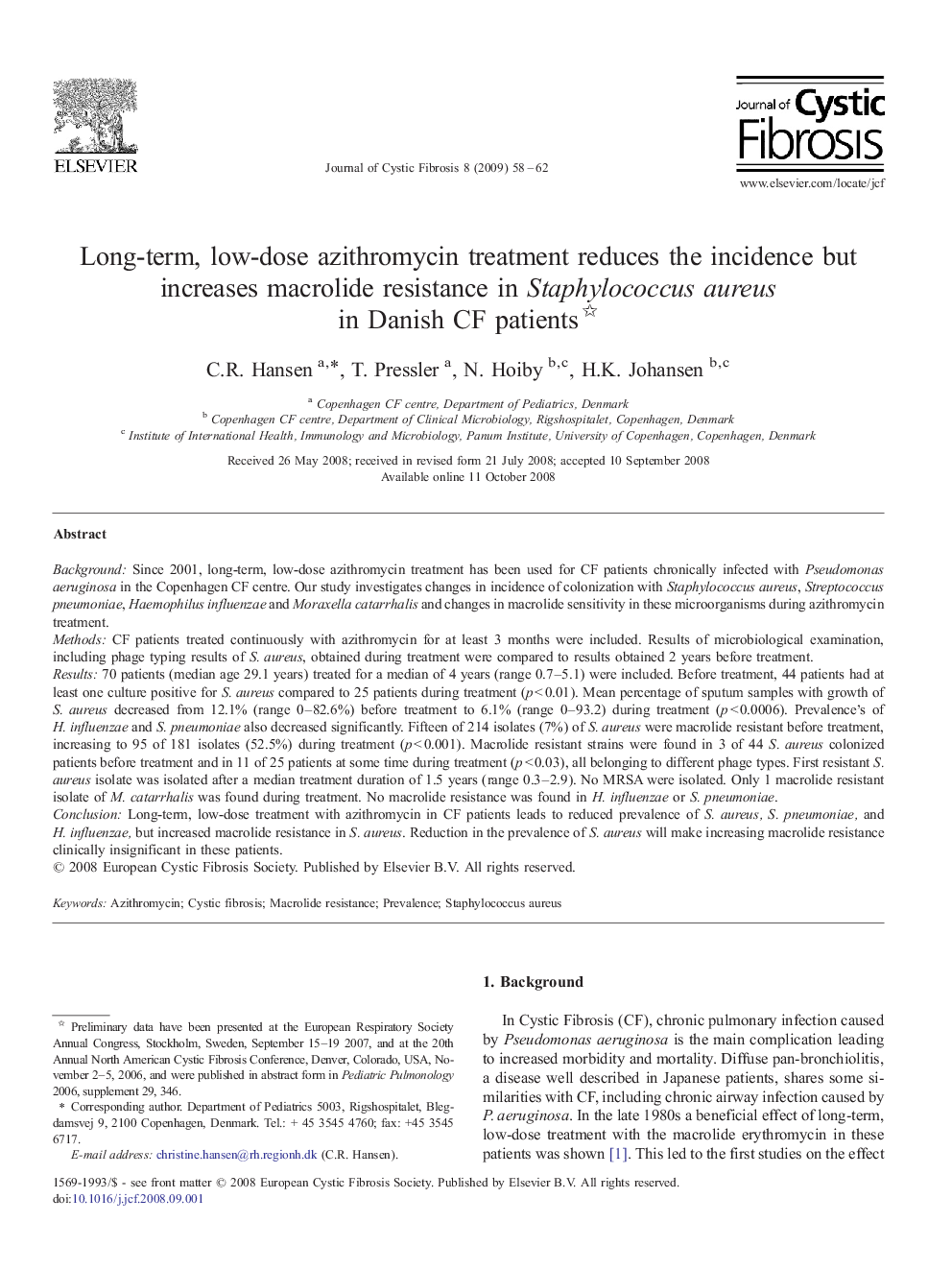| Article ID | Journal | Published Year | Pages | File Type |
|---|---|---|---|---|
| 4208981 | Journal of Cystic Fibrosis | 2009 | 5 Pages |
BackgroundSince 2001, long-term, low-dose azithromycin treatment has been used for CF patients chronically infected with Pseudomonas aeruginosa in the Copenhagen CF centre. Our study investigates changes in incidence of colonization with Staphylococcus aureus, Streptococcus pneumoniae, Haemophilus influenzae and Moraxella catarrhalis and changes in macrolide sensitivity in these microorganisms during azithromycin treatment.MethodsCF patients treated continuously with azithromycin for at least 3 months were included. Results of microbiological examination, including phage typing results of S. aureus, obtained during treatment were compared to results obtained 2 years before treatment.Results70 patients (median age 29.1 years) treated for a median of 4 years (range 0.7–5.1) were included. Before treatment, 44 patients had at least one culture positive for S. aureus compared to 25 patients during treatment (p < 0.01). Mean percentage of sputum samples with growth of S. aureus decreased from 12.1% (range 0–82.6%) before treatment to 6.1% (range 0–93.2) during treatment (p < 0.0006). Prevalence's of H. influenzae and S. pneumoniae also decreased significantly. Fifteen of 214 isolates (7%) of S. aureus were macrolide resistant before treatment, increasing to 95 of 181 isolates (52.5%) during treatment (p < 0.001). Macrolide resistant strains were found in 3 of 44 S. aureus colonized patients before treatment and in 11 of 25 patients at some time during treatment (p < 0.03), all belonging to different phage types. First resistant S. aureus isolate was isolated after a median treatment duration of 1.5 years (range 0.3–2.9). No MRSA were isolated. Only 1 macrolide resistant isolate of M. catarrhalis was found during treatment. No macrolide resistance was found in H. influenzae or S. pneumoniae.ConclusionLong-term, low-dose treatment with azithromycin in CF patients leads to reduced prevalence of S. aureus, S. pneumoniae, and H. influenzae, but increased macrolide resistance in S. aureus. Reduction in the prevalence of S. aureus will make increasing macrolide resistance clinically insignificant in these patients.
